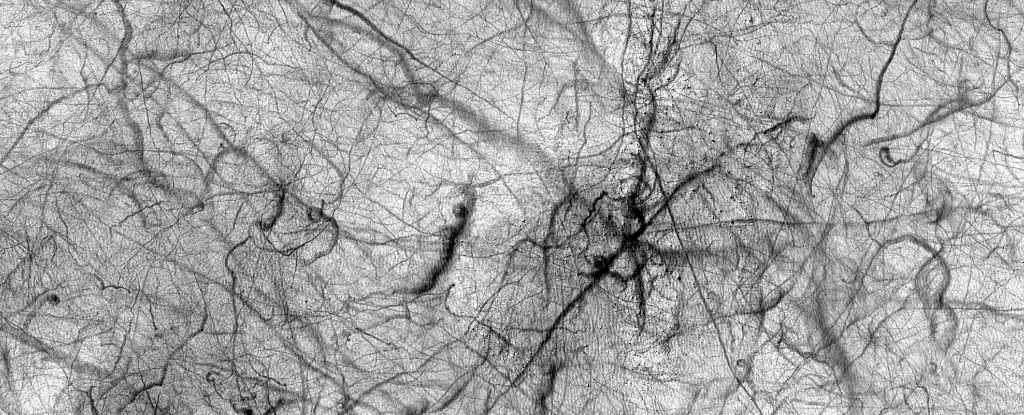Recent findings have shed new light on the captivating phenomena of dust devils on Mars, providing a vivid picture of the planet’s dynamic atmospheric processes. These mesmerizing swirling columns of dust are not just a visual spectacle; they play a crucial role in shaping the Martian landscape. Captured by the HiRISE camera aboard NASA’s Mars Reconnaissance Orbiter in September 2022, stunning imagery reveals the Haldane Crater, a region significantly marked by the relentless activity of these dust devils. Each whirlwind forms, travels across the surface, and then dissipates, only to be replaced by another swirling entity, underlining the ceaseless natural activities on the Red Planet.
Dust devils, akin to their terrestrial counterparts, erupt under specific climatic conditions. The Martian surface, characterized by its thin atmosphere, predominantly composed of carbon dioxide, heats up due to solar radiation, causing warm air to rise abruptly. This phenomenon draws in loose dust and creates a rotating column that manifests as a dust devil. The implications of dust devils extend beyond mere aesthetics; they serve as agents of erosion and deposition. Scientific analysis of the tracks left by these dust devils aids researchers in assessing dust accumulation rates, offering insights into Martian weather patterns and climate shifts over time.
The rich tapestry of the Martian surface features vast plains, towering volcanoes, and extensive canyon systems, hinting at a history where water may have flowed and a thicker atmosphere might have existed. These geological clues propose that Mars could once have harbored conditions suitable for life, positioning dust devils as key players in understanding the planet’s climatic and atmospheric evolution.
The thin Martian atmosphere, merely 1% the density of Earth’s, presents a myriad of challenges to both robotic explorers deployed on the planet and the possibility of human habitation. Composed primarily of about 95% carbon dioxide, with trace amounts of nitrogen, argon, and oxygen, this atmosphere fails to sustain life without advanced technological support. The lack of substantial atmospheric pressure not only affects potential biological processes but also influences weather phenomena, including dust devils.
While the atmosphere is sparse, it is notably dynamic; dust devils serve to maintain this dynamism, promoting the redistribution of dust that drives Martian weather systems. This highlights a duality—dust devils can convey dust, altering surface conditions, which can hinder the functionality of machines on the ground. For instance, their deposition of fine dust can obscure solar panels, diminishing their power output. Yet, paradoxically, the winds generated by these same weather systems can clear dust, enhancing panel efficiency when conditions align favorably.
As NASA continues to unveil more extraordinary images of Martian whirlwinds, the data gathered is invaluable for future explorations. By analyzing the fading tracks of dust devils, scientists are better positioned to calculate the long-term impacts of dust accumulation on solar technology and other instruments. Such knowledge is essential for safeguarding upcoming manned and unmanned missions to Mars, ensuring that the equipment can operate optimally in the harsh Martian environment.
In closing, the spirited dust devils of Mars epitomize the ongoing dialogue between our scientific ambitions and the complex realities of extraterrestrial exploration. Every image and data point collected is a stepping stone toward unraveling the mysteries of the Red Planet, paving the way for humanity’s next giant leap into the cosmos. By studying these atmospheric phenomena, we not only deepen our understanding of Mars but also prepare ourselves for the challenges that await in the intricacies of our universe.

